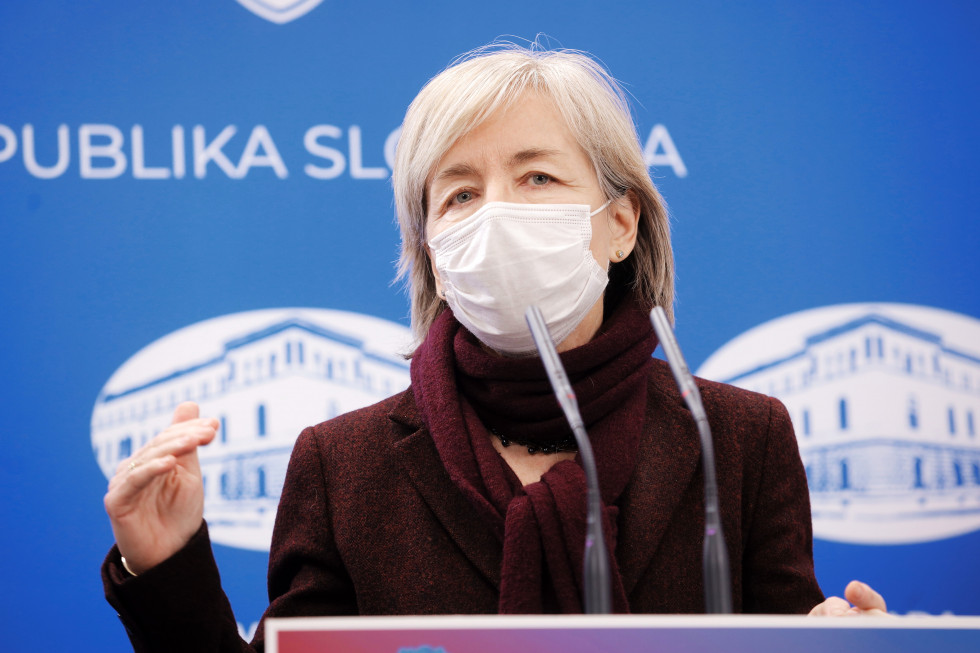Rise in hospital admissions
Of the 6,193 PCR tests performed on Tuesday, 1,765 (28.5%) were positive. Of the 5,750 rapid antigen tests also performed, 327 (5.7%) were positive. This means a total of 2,092 positive tests, said Kacin in his presentation of epidemiological data.
There were 44 more hospitalised patients yesterday than on Monday, bringing the total to 1,244, of whom 206 are in intensive care, which is 14 more than the previous day. A similar increase has also been recorded at the Ljubljana University Medical Centre, where yesterday there were 329 hospitalised COVID patients, or 14 more than the previous day, of whom 61 are in intensive care, 10 more than on Monday. A total of 17 patients died, 11 in hospitals and 6 in nursing homes.
Yesterday’s new positive cases were concentrated in the following municipalities around the country: Nova Gorica (49), Ajdovščina (41), Koper (37), Celje (52), Velenje (51), Žalec (35), Sevnica (33), Slovenske Konjice (20), Cerklje na Gorenjskem (19), Radovljica (32), Tržič (21), Kranj (63), Ljubljana (194), Kamnik (25), Domžale (24), Ig (22), Grosuplje (20), Novo Mesto (48), Krško (36), Črnomelj (27) and Maribor (85).
The 7-day average number of infections at the national level currently stands at 1,668 (yesterday the figure was 1,851). Slovenia is thus unlikely to reach the key figure of 1,350 positive cases, which would allow the country to enter the red tier and begin the relaxation of measures, in the next few days.
In old people’s homes there were 41 new positive cases among residents, bringing the total in the second wave to 10,552, and 10 new cases among staff, bringing the second-wave total to 3,923. Five special social care institutions recorded 1 new positive resident and 1 new positive staff member. The total is thus 57, which is significantly less than yesterday.
The number of positive cases in week 53 in comparison to week 52 shows that some countries in the European Union are seeing a drop in the number of positive cases, explained Čakš Jager. Countries that stand out include Belgium with a drop of 32%, Denmark with 39%, the Netherlands with 37% and Romania with 22%. In terms of the total number of positive cases, the week-on-week increase has been 1.9%, with standout countries including Ireland with 103%, the Czech Republic with 54%, Spain with 32% and Portugal with 35%.
In the 14-day figure for confirmed cases per 100,000 inhabitants by age, three age groups stand out with the highest figures. These are the 25–34 age group, the 35–44 age group and the 45–54 age group. After these three groups comes the over 85 age group.
Grgič Vitek provided the information that up to this moment Slovenia has received 49,725 doses of the Pfizer vaccine, 16,575 of them this week. Of these, 10,000 doses will be destined for those over 85, while the remainder will go to health workers. Next week the distribution of the vaccine will see the greater part used to provide a second dose to those who have already received their first dose. Over the following two weeks the entire quantities of doses received will be used for second doses. In February and March these two weekly combinations will alternate a number of times.
Of the total 49,725 doses so far received, 40,000 have been distributed to date, corresponding to the number of people who have been vaccinated. The electronic system of the NIJZ currently shows 25,200 vaccinated individuals, which is just over 1% of the total population. The number of adverse events following vaccination has increased to 76.
Rebolj described the system for registering interest in vaccination. He noted that rapid testing is being carried out and that the level of interest in vaccination has fallen in the last two days.


